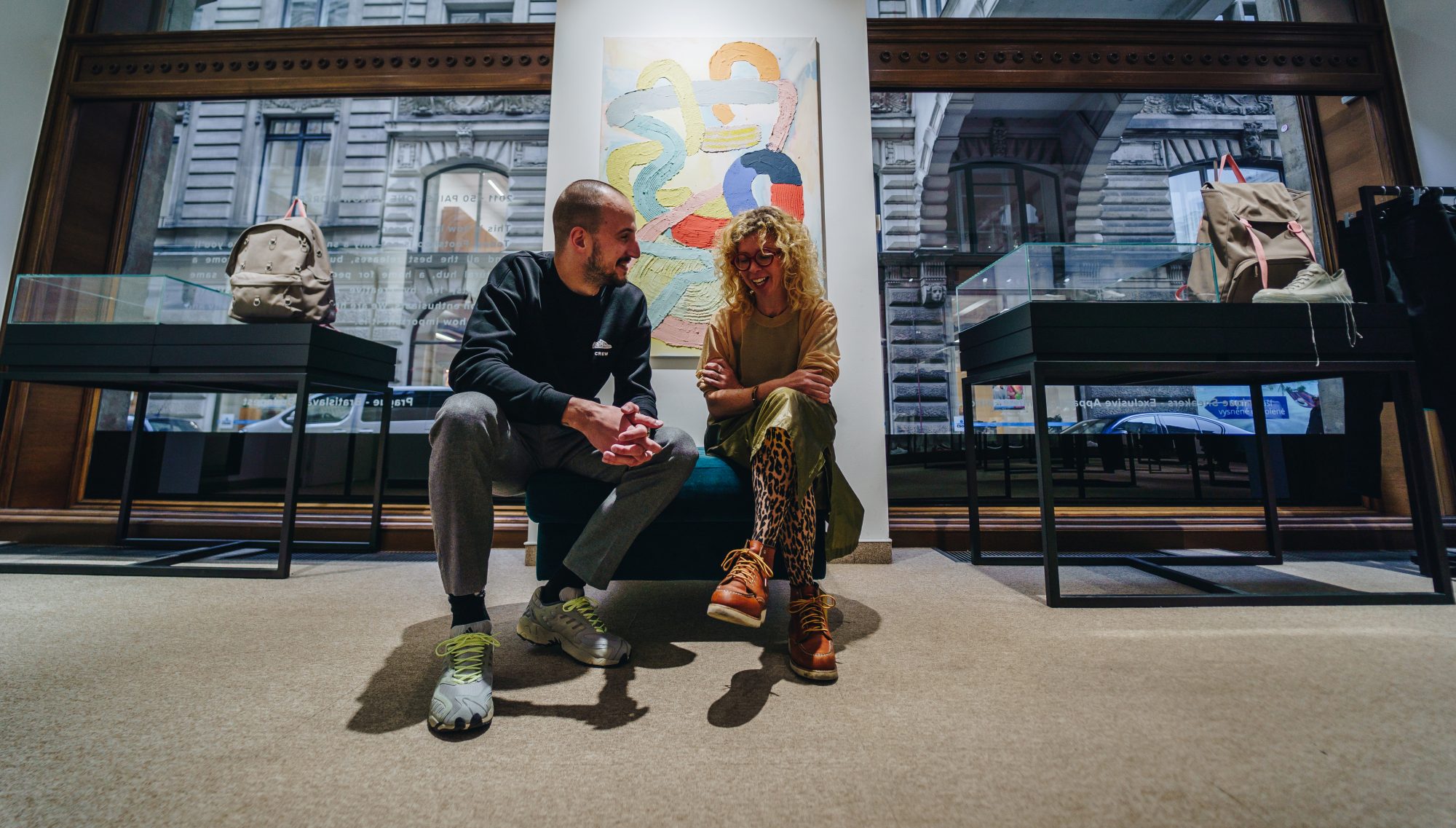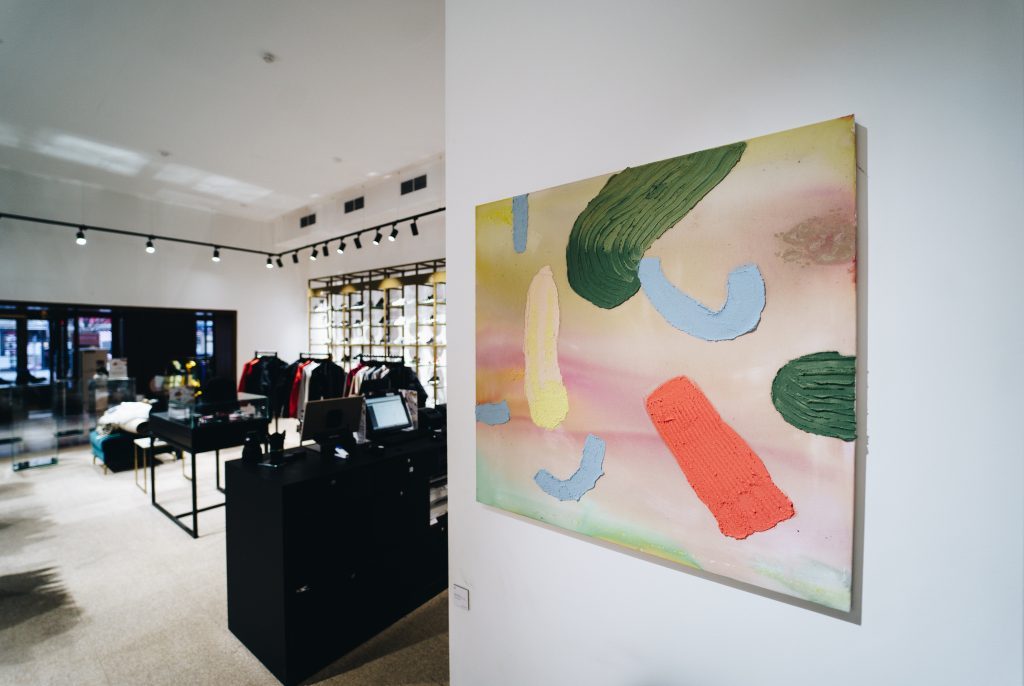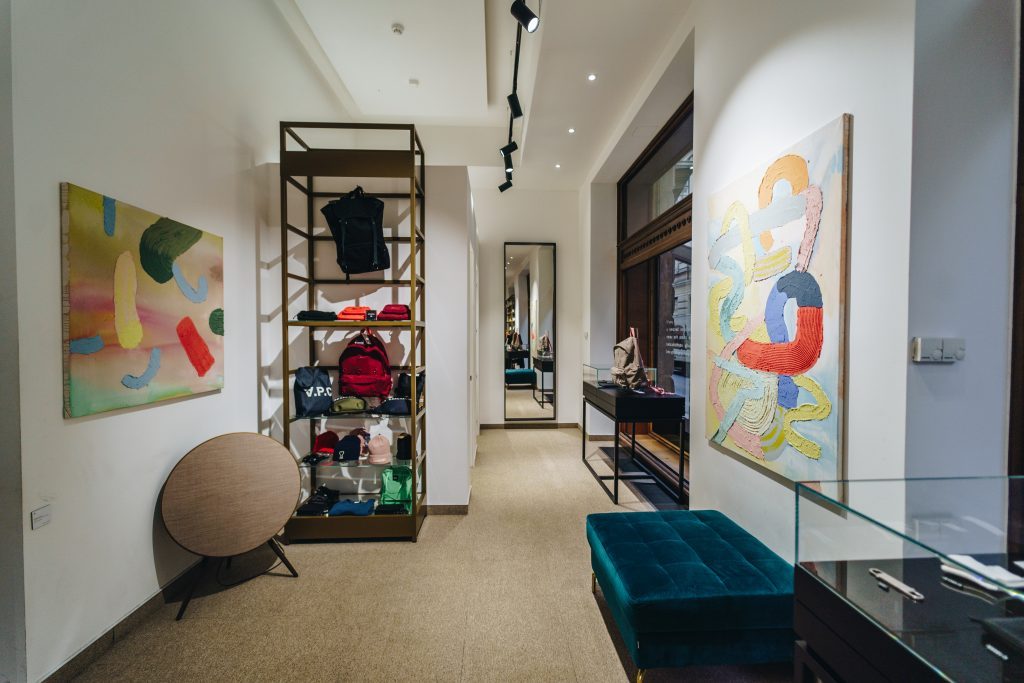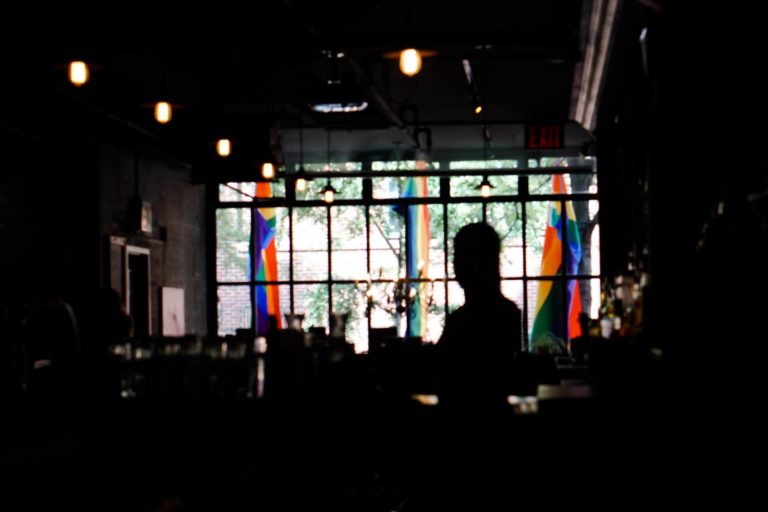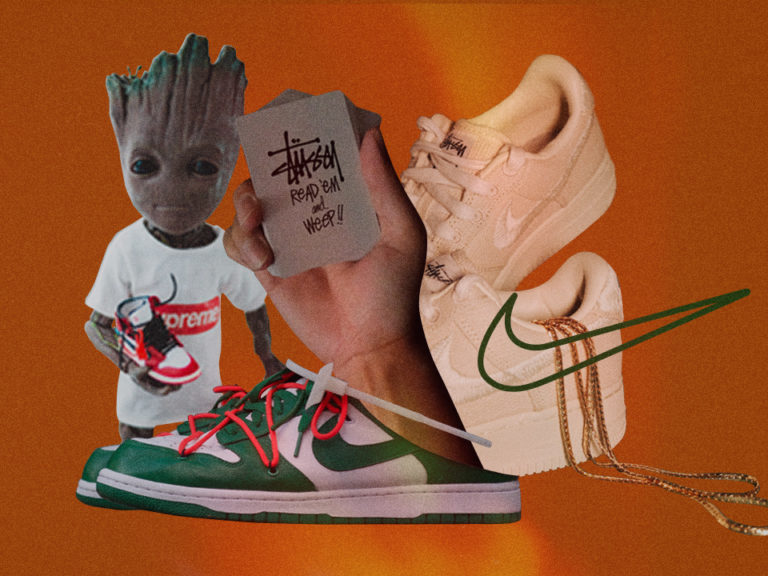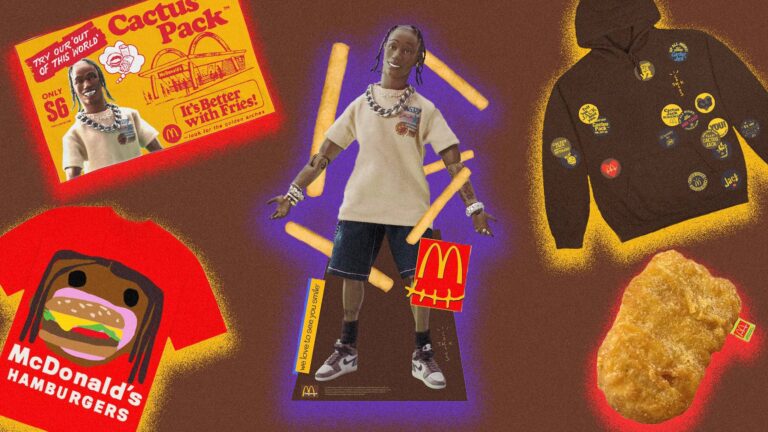Lucie Jindrák Skřivánková is a very talented and progressive artist, with her work spanning across numerous genres. She´s currently presenging a series of abstract paintings that can invoke your imagination at our Na Příkopě store. Michal Bým asks about her experimental approach to creating these paintings and her other artistic activities in this short interview.
Can you tell us something about your work process when painting?
It´s interesting, because first I need to be in a certain kind of mood. In a sense I´m preparing for the painting. I mean that when I go into the studio, I have some sort of vision in my head, in terms of colours, but usually I don’t know what the theme is going to be at that point. So as I´m gradually creating something that fits in terms of colors, the process itself starts to give the painting some sort of composition.
So the most important part is the process itself?
Yes, for me the process is very important – my work is very intuition-based. The moment, during which I´m painting, is important.
What kinds of materials do you work with these days?
Lately, I’ve been using new materials that I approach similarly to how a mason would approach his work – firstly because of how heavy the materials are. I don’t even use brushes, I use scrapers, spatulas, palette-knives and so on. My paintings are usually large, so in turn I use large tools.
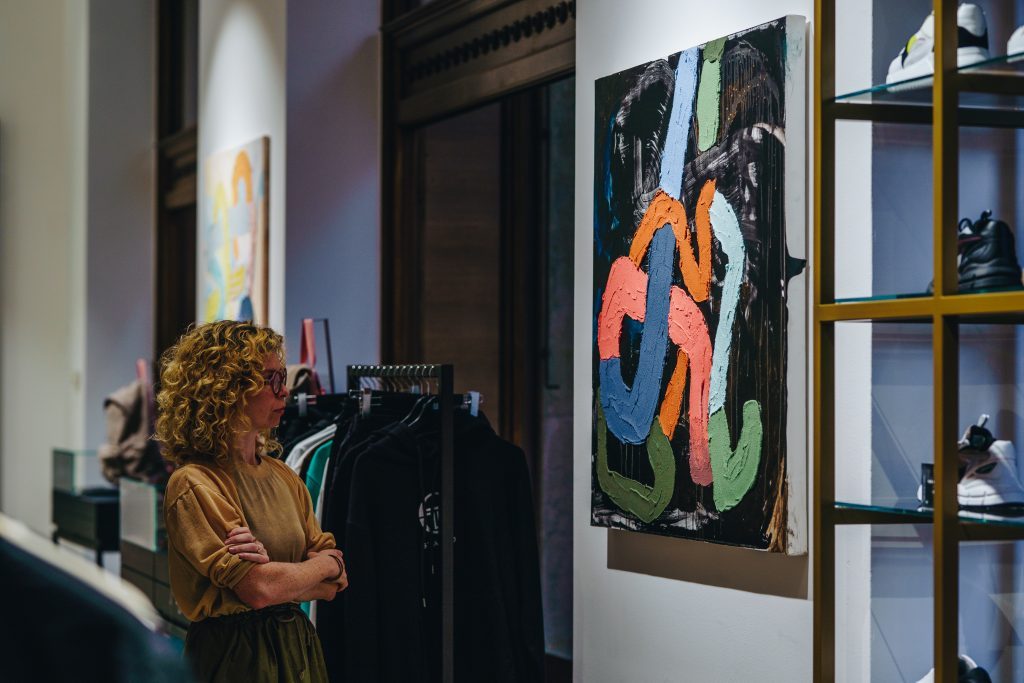
Painting aside, you also specialize in different genres of art. What led you to widening your field of work?
I’m a creative person on all kinds of levels. I’m inspired by a lot of things and I go through different phases, during which different things interest me. So I didn’t want to limit my creativity to just painting. Prints, watercolors, recycling clothes, making porcelain. Those are all different ways of expressing myself. I let my creativity run freely. It´s a lot of fun for me, and it also fulfills me.
So do you search for some kind of additional value in your work?
First and foremost, I want my art to be something you encounter everyday, which is also why I widened my field of work like this. But for me, it’s not really about having some additional value. A painting is something a person percieves. It communicates something to the person, it contains emotions. I want to use all kinds of channels to relay my message.
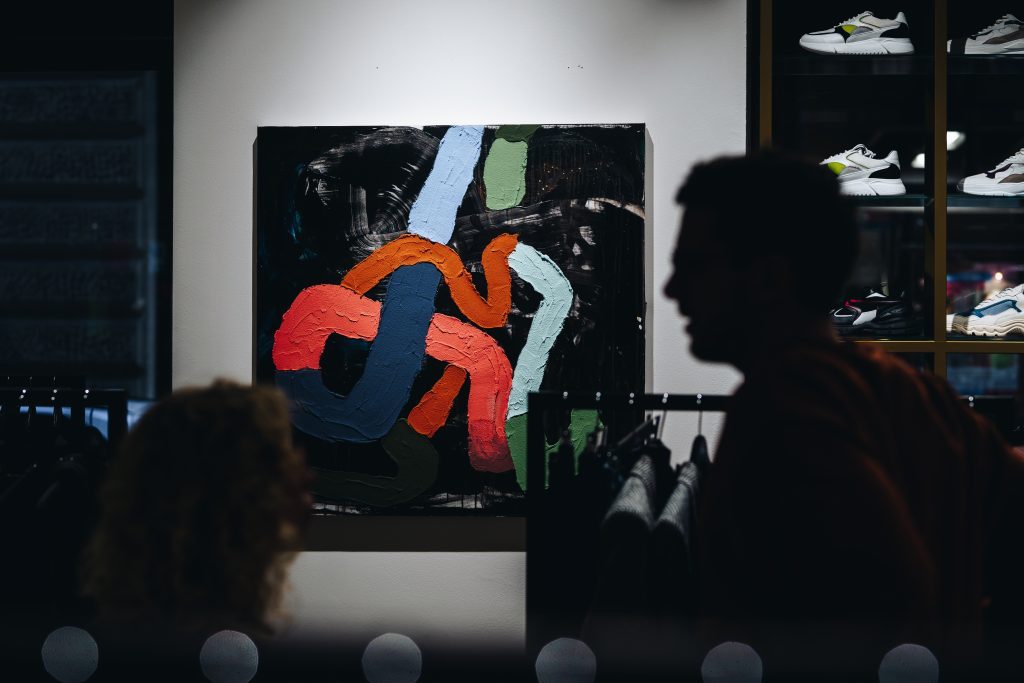
Could you talk a little bit more about your clothing upcycling project?
I was fascinated by clothes since forever and I started sewing my own limited collections a long time ago – I used to sell them at my shop on Krymská. Back then I called it Mu Koncept. Back then, the word „concept“ wasn’t even used here. Mu Koncept is where I started making upcycled clothes, which almost no-one knew what it was. I started simply because i liked clothes. I liked searching for clothes, wearing it and then giving it a new face. I often see a piece of clothing and immediately start thinking about what I would do with it – even though it might be just a minimal change. At one point I enjoyed this so much, I almost worked on it more then on painting. But like I said, I go through different phases – currently, I mostly focus on paintings and, for example, murals.
Can we see these murals somewhere?
Recently, I got the chance when the Pražská správa nemovitostí wanted to point out that Prague needs more legal spaces for graffiti and street art. They approached me whether I would want to do something on Tančící dům. I’m not a graffiti writer, so I thought I’d do a mural there. Basically like one of my paintings, but on a larger scale. I did it overnight, from 10 PM to 5 AM. I wasn’t exactly sure what would appear there afterwards, so I just let my creativity flow and made a mural on one of the main columns of the building.
Another mural I did is at Zbraslav, and it was comissioned. It´s on a 20 metre long wall of a privately owned house. By coincidence, this is how the paintings that are at Na Příkopě came to be –when I was making the mural, I had to experiment and try new ways to approach the painting, which I later utilized when I was making the ones at Na Příkopě.
How did your work evolve through time? Were you always inclined to more abstract ideas?
I was thinking about it a while ago, when I was doing a sort of recapitulation. Back in middle school, I was painting architecture. I had my tempera paints, some paper and I would paint buildings during the night. They were kind of metaphysical, surrealistic kinds of paintings – sharp shadows, light etc. And I liked that for a very long time. Then I went to the Arts Academy, where I continued with architecture. At that time, I also started doing collages – which I continued to do for about ten years, maybe more. All of my work had something to do with architecture.
Then I started working on this huge project. I went to Brazil for two study trips, and found out about Oscar Niemeyer´s architecture. I had an exhibition in Brazil’s capital. That was big, both for me and for my architecture-related paintings, which I think were at their zenith at that time. I continued on these paintings when I was back in Prague, and finally I reached a breaking point. I had a year-and-a-half long phase, during which I experimented heavily with different kinds of forms. I did architecture for about 15 years and I felt that it doesn´t bring me joy anymore. That this is the end of that chapter and I want to do something else. I used to try something different every week. I liked it, but at the same time I couldn’t find something, that would make me happy.
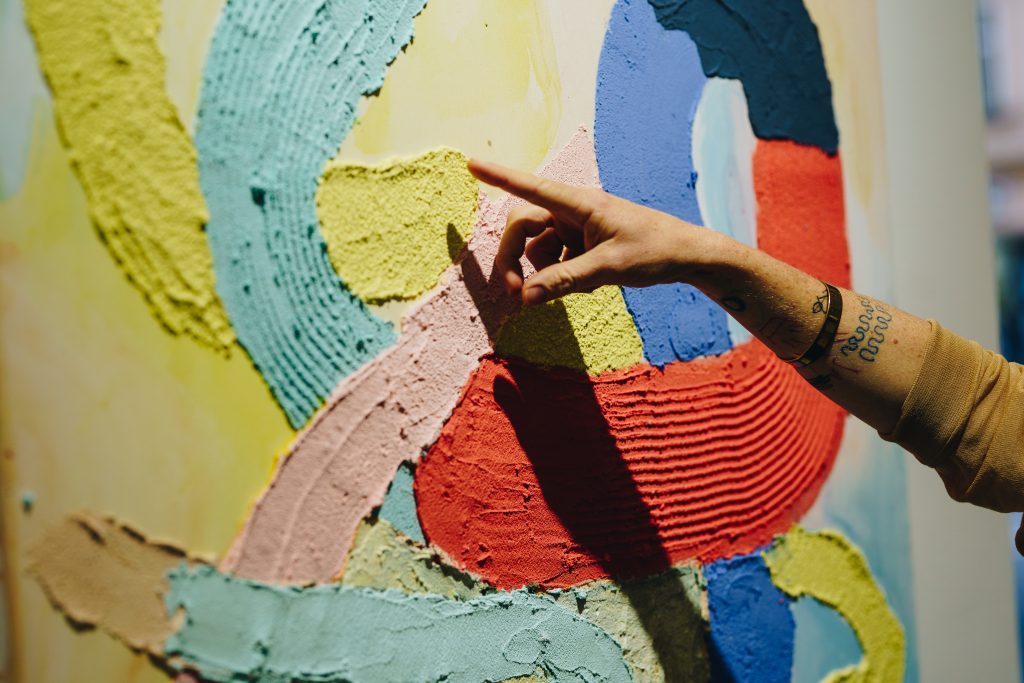
So when did the final breaking point come?
The mural commision introduced me to completely new materials to use and new ways to approach art. Which led me to abstract art. For me personally, abstraction is the highest level, when built up from a realistic basis. It enables the person viewing the painting to make all kinds of associations. Colours play a big role. When you tune into it, it communicates some sort of information. There isn’t some distracting sort of thing, like, “oh, there’s a face and it’s looking at me.“
That’s how I feel it. Most of the worlds biggest painters moved from realistic paintings to abstract ones, because simplifying the form of the painting is kind of zen. I’m in this phase at the moment, but at the same time I realize that life goes through all kinds of phases of returning to the past and so on – so I can’t say what’s going to happen in the future. But at the moment, this is the way it is, and I like it the way it is.
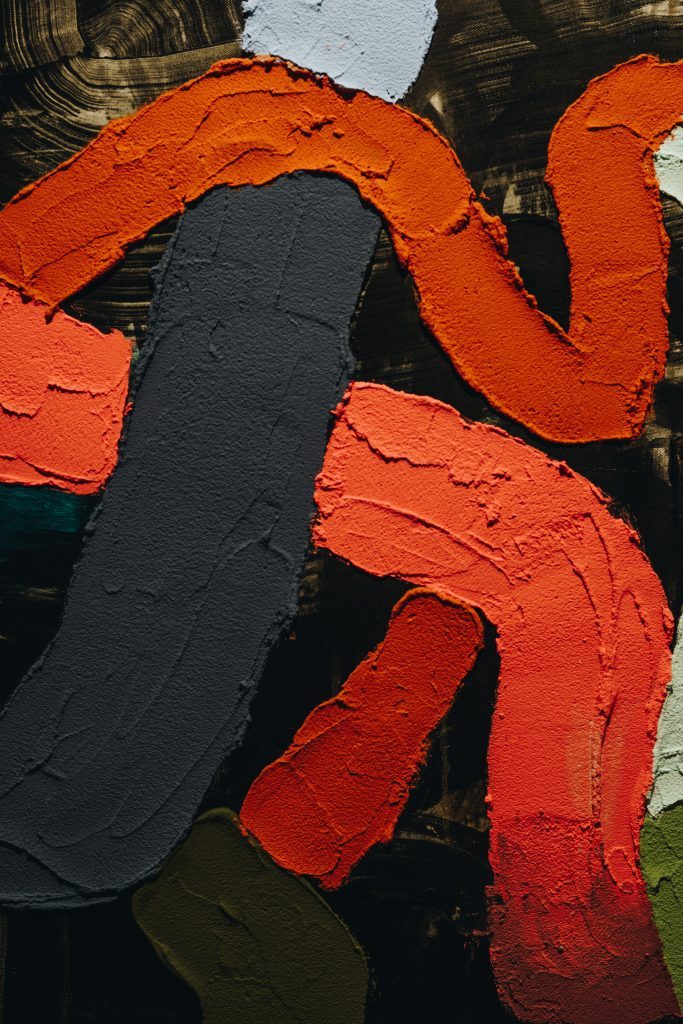
- KishKash: I want to set up a museum dedicated to contemporary culture - 23. 3. 2022
- Shlømo: Nowadays, youth wants to feel the 90’s freedom rave vibe - 4. 1. 2022
- FTSHP Fit w/ Blanka & Mika - 16. 12. 2021
